Succulents come in an assortment of colors, but you’ll find that the majority are a shade of green. If that’s the case,why is my succulent turning red?This is a common question that many beginner plant lovers end up asking, especially if they didn’t buy a red-colored succulent in the first place!
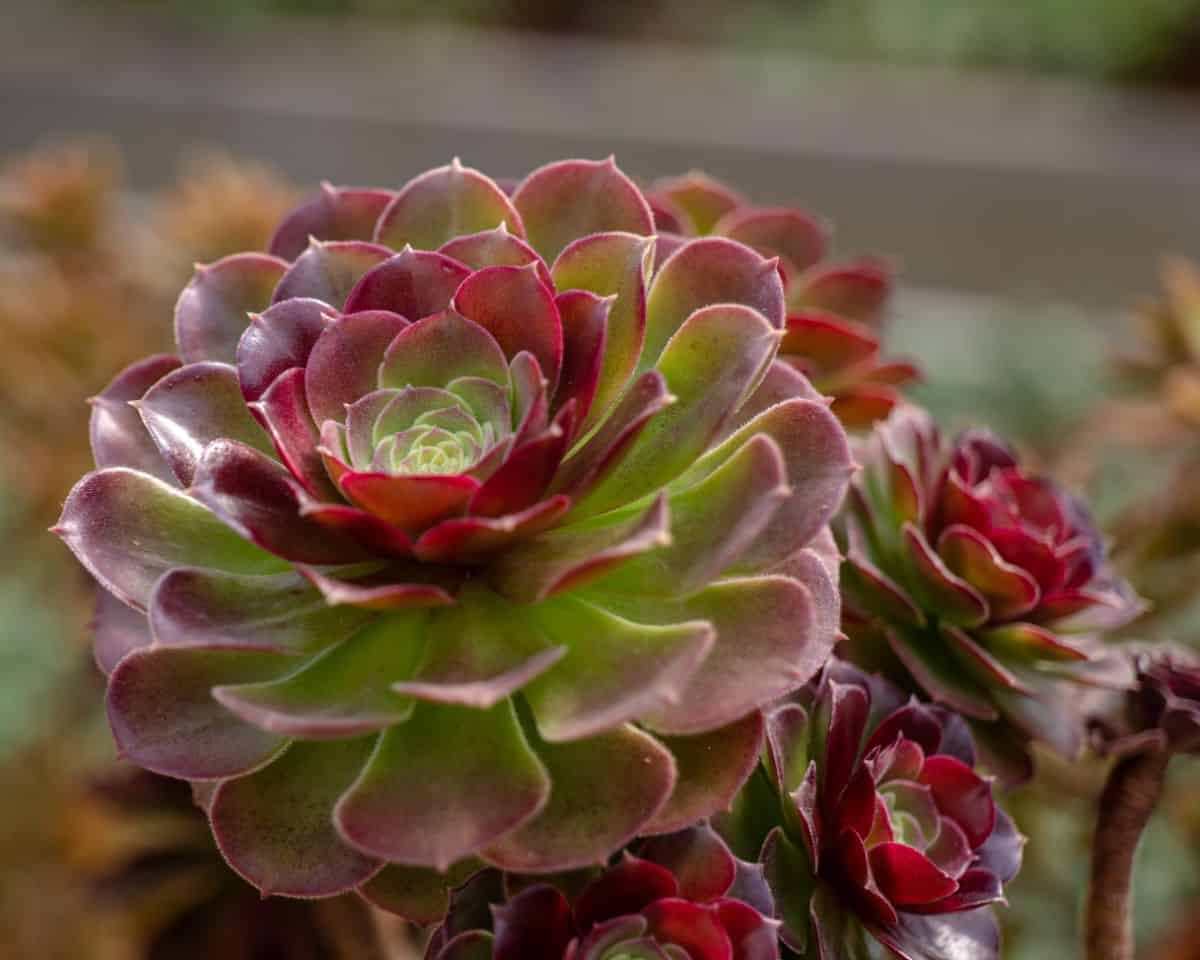
There are more than a few reasons why your green succulent turns a different shade. To help you figure out if it’s something to do with how you care for your succulent, let’s talk about the most common reasons why this happens.
Jump to:
- Why Is My Succulent Turning Red? The Most Common Problems and Solutions
- Exposure to Extreme Conditions
- What You Can Do
- Too Much Sunlight
- What You Can Do
- Poor Soil
- What You Can Do
- Lack of Water
- What You Can Do
- Can Succulents Turning Red Be a Good Thing?
- Good Stress
- Succulent Variety
- Sempervivum Heuffelii (Chocolate Sundae)
- Crassula Capitella (Red Pagoda)
- Christmas Sleigh Aloe
- Tillandsia Ionantha (Air Plant)
- Succulent Leaves From Green To Red
Why Is My Succulent Turning Red? The Most Common Problems and Solutions
As someone who has their own garden, much of your time could revolve around diagnosingplant problems. Succulents turning red is more common than you’d think and can often be fixed with a couple of quick tips.
Exposure to Extreme Conditions
Did you know that succulent plants tend to turn red when exposed to extreme heat and cold? This issue can often arise if your plants are in one location with a specific climate and then brought to an entirely different environment. For example, if you initially keep your succulents indoors and then transfer them outside in the summer.
Although this issue doesn’t speak specifically to the overall health of your succulent, stress can be detrimental to its longevity. The more stress your succulents experience, the less nutrition they’ll absorb. As a result of this, you’ll find that their growth is significantly stunted.
It’s essential to pay special attention to the conditions your plants are exposed so that they can be their healthiest. Succulent plants are resilient, but they do require specific conditions to prolong their longevity. Most succulents do best in temperatures between 65 and 75 degrees Fahrenheit.
What You Can Do
Changing the climate your succulents are exposed to is quite simple, as all you have to do is manage room temperature. Remember, these plants traditionally grow in the desert, so they are relatively temperature-hardy. Even so, you’ll want to ensure temperatures don’t drop below 40 degrees Fahrenheit at night.
Also, it’s crucial to ensure your plants gather more than enough warmth during the day to keep them dry. If succulents get too much low light and low temperatures 24/7, they won’t survive.

Too Much Sunlight
First-time plant owners often put their plants in precarious situations, assuming the more light, the better. However, this isn’t always the case, especially with succulents. Too much direct sunlight can bring on an ample amount of stress, thus encouraging their foliage to turn red and then brown.
With that said, red tips on succulents or red spots on succulents don’t immediately mean they get too much sun. Some species, such as the Crassula ovata, turn red as a part of their natural development. As they take in a healthy amount of sun, you’ll begin to notice reddening tips and leaves in direct light.
As mentioned, you’ll want to consider the specific growing recommendations for the type of succulents you own. If there aren’t any notes of the foliage turning red naturally, changing from a green color could mean stress or poor nutrition.
What You Can Do
The most important thing to note when growing succulents is the amount of light they’re exposed to. With newly planted succulents, you’ll want to gradually introduce them to full sun, as they’re most likely to burn. Once established, you can provide up to six hours of continuous sun per day, depending on the species.
Another essential step to managing bright light is to ensure you regularly rotate your plants. You’ll want to ensure that all sides are getting enough light for their overall health. Also, it can assist with making sure they stand upright rather than lean.
No products found.
Poor Soil
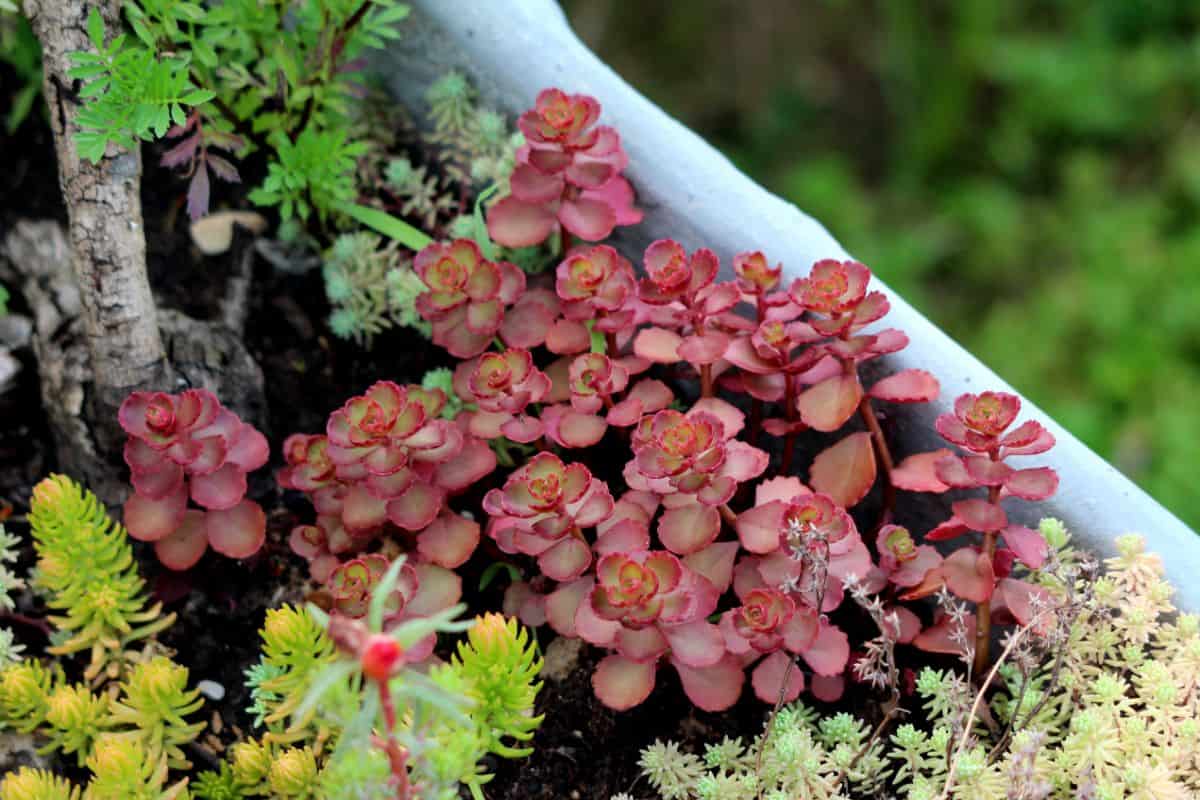
When putting plants in pots, you’ll need a growing medium, such assucculent soil. Succulents are known to do well in different types of medium, many of which contain sand. However, too much sand in your soil mix can stress the plant and cause color changes.
A poor mix of soil nutrients can cause reddening of the leaves, which is important to note. If you’ve begun to notice a succulent turning red, look at the nutrients on your fertilizer’s packaging. The ideal combination of nutrients for succulent leaves is 10-10-10.
With a 10-10-10 fertilizer for succulents, you’re providing 10 percent nitrogen, 10 percent potassium, and 10 percent phosphorus. These nutrients work together to assist leaf growth, fight disease, and promote protection from root rot. If you choose a medium that’s too concentrated or not concentrated enough, it can damage roots.
What You Can Do
As mentioned,balanced fertilizeris the best way to prevent red spots on succulents. A mixture of 10-10-10 or 15-15-15 should be suitable for the majority of plant varieties. Also, additional nutrients can be added using manure tea or diluted fish emulsion.
Lack of Water
It can be exciting to add succulents to your indoor or outdoor garden, especially as they often require less maintenance than other plants. Many gardeners appreciate how little water the plants need, but it’s important to note that they still need to be watered. With a lack of water, their foliage is bound to turn red and then brown.
Undoubtedly, succulent leaves are very drought resistant, making them great for arid climates. Still, you should maintain a regular watering schedule to ensure they don’t dry out and die. Ideally, succulents should be watered when the soil feels completely dry.
Creating your own watering schedule based on your plant’s needs is a fantastic way to manage your succulent’s health. Remember, every plant is different and has its own requirements. You’ll want to check regularly to determine when it’s time to water to ensure the health of the entire plant.
What You Can Do
There’s no specific formula for how often to water succulents, as their needs differ significantly. What you should do is keep an eye out on their soil. If it’s dry one inch below the surface, give them a little moisture. Most succulent owners find watering every seven to 14 days during the summer works well in most instances.
Can Succulents Turning Red Be a Good Thing?
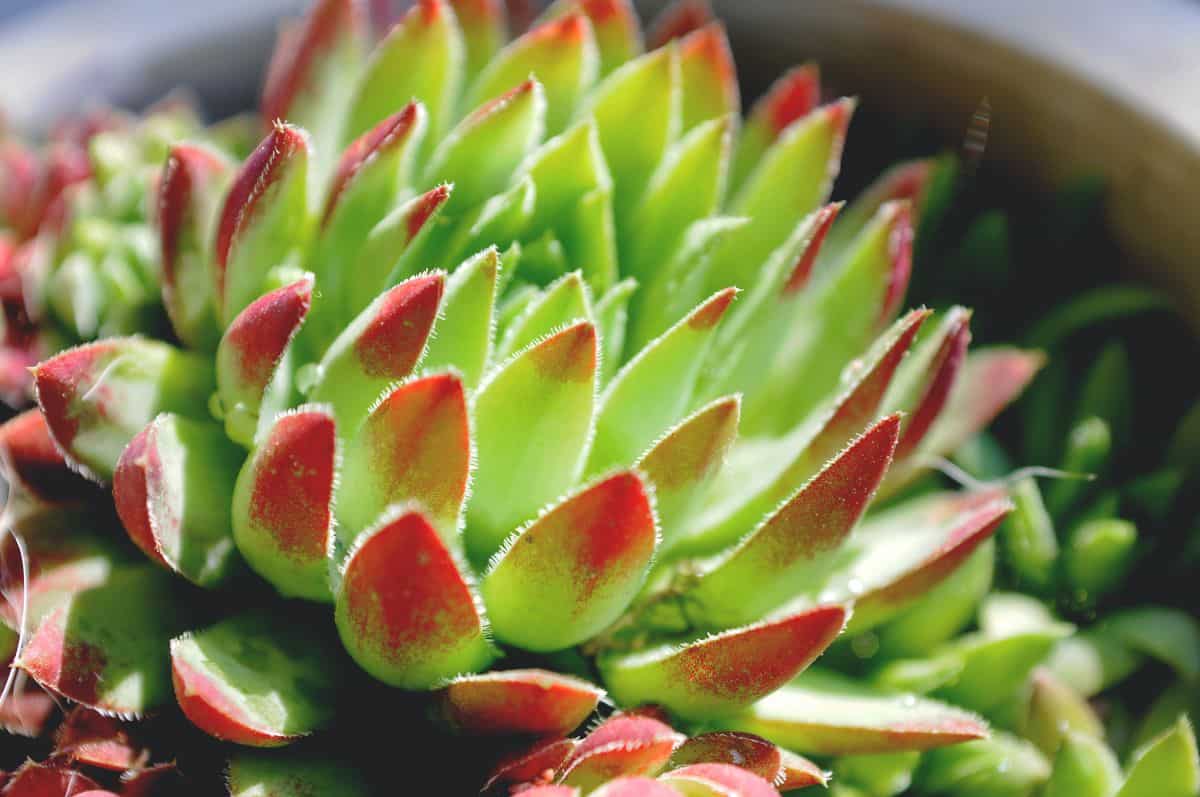
There are many instances where red tips on succulents or red spots on succulents can mean inadequate nutrition and watering. Fortunately, there are a couple of cases that could suggest that not all hope is lost. Not only are some succulents prone to turning red naturally, but it can also be a sign of good stress.
Good Stress
You might be wondering,isn’t all stress bad stress?The truth is, some plants experience good stress, which can bring out their true beauty. Succulents are a fantastic example, as good stress can cause them to turn into beautiful colors.
When succulents are exposed to increased levels of sunlight, their foliage begins producing carotenoids. Carotenoids are compounds filled with red pigment that distributes throughout the plant’s leaves. Its primary purpose is to protect the succulent against sunburn, acting as a helpful shield.
Although you’ll want to ensure your healthy plant isn’t left in the sun forever, increased sunlight exposure can bring out vibrant colors. By managing how much intense sunlight they receive, you can bring out the true beauty of your plant’s coloring.
Succulent Variety
When choosing the plants you want in your garden, paying close attention to species is essential. You’ll be able to tell what colors your succulents will turn into, as well as have an idea of their care instructions.
Several types of succulents are innately designed to turn red over their lifespan. Let’s look at some of the most popular succulent species that have a jaw-dropping red coloring bound to take your breath away.
Sempervivum Heuffelii (Chocolate Sundae)
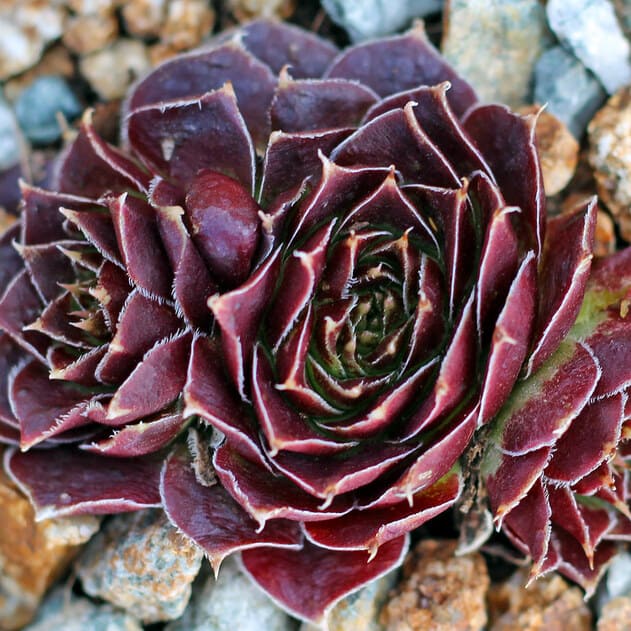
Buy it from:
The Chocolate Sundae succulent has a stunning combination of red and lime green at the center. The leaves will deepen in redness throughout the season, with rosettes that grow to as large as four inches. It’s a fantastic option for beginners, as it can be easily propagated and is frost-hardy.
Crassula Capitella (Red Pagoda)
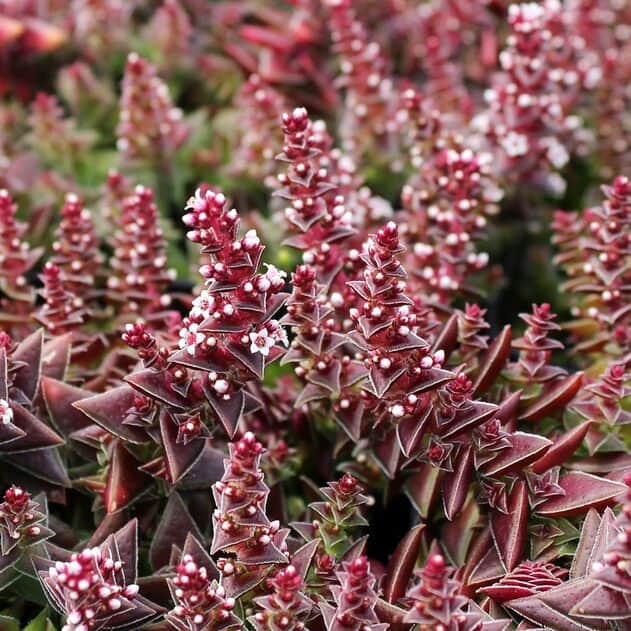
Buy it from:
The Red Pagoda has quickly become one of the most popular types of succulents because of its unique foliage. It’s a plant native to South Africa and has ruby red, triangular leaves. Not only does this plant fare well in frost-free climates, but it’s also a fantastic ground cover.
Over its lifespan, the Red Pagoda will change from lighter red to a brilliant burgundy, especially when exposed to full sun. Aside from being grown outdoors, it’s also a fantastic potted succulent that will quickly become a room’s focal point.
Christmas Sleigh Aloe
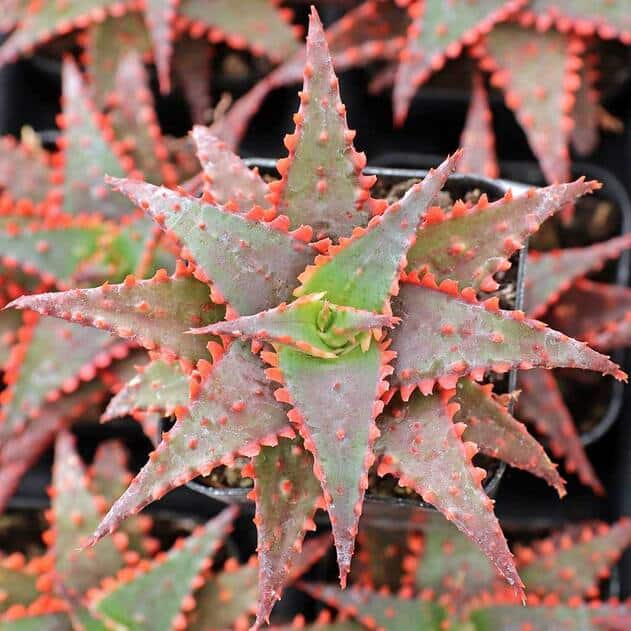
Buy it from:
If you’ve begun researching a succulent turning red, you might own a Christmas Sleigh Aloe plant already. These fantastic succulents are flashy with a combination of deep green and boastful red, much like Christmas. You’ll love using it for outdoor landscaping, but it can also be an aesthetic choice for indoor gardens.
What makes this succulent unique is that during the fall, it blossoms beautiful pink flowers. Also, it’s a highly tolerant plant, so it’s a great option for first-time succulent owners.
Tillandsia Ionantha (Air Plant)
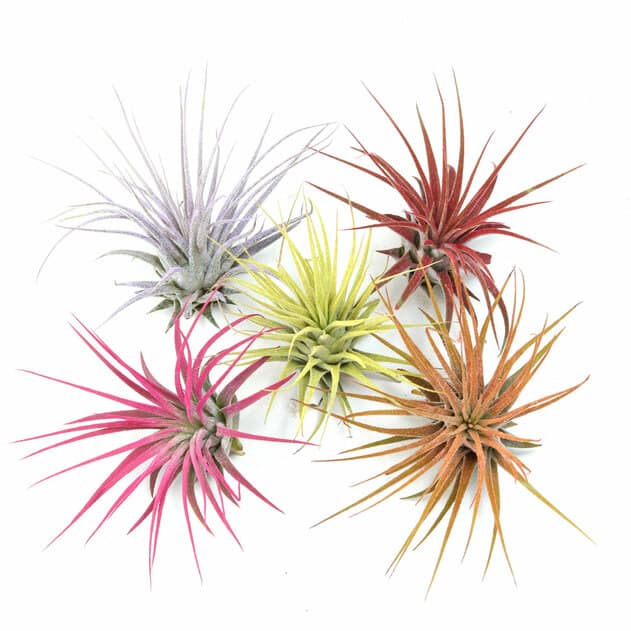
Buy it from:
The Air Plant has a unique appeal compared to most traditional succulents. They are pretty tiny, often never growing larger than three inches in length. Their most notable feature is the distinctive red of their foliage, which enhances with sun exposure.
Another unique aspect of this plant is that it doesn’t require soil to be planted anywhere. With a combination of ample airflow, indirect sunlight, and occasional misting, they are a fabulous addition to your garden.
Succulent Leaves From Green To Red
Asking why is my succulent turning red is more common than you’d first think. And as we’ve shared here, there are many reasons for color changes, from their health to the temperatures they are exposed to. The key is knowing the specific needs of your succulent so that you can make necessary changes.

